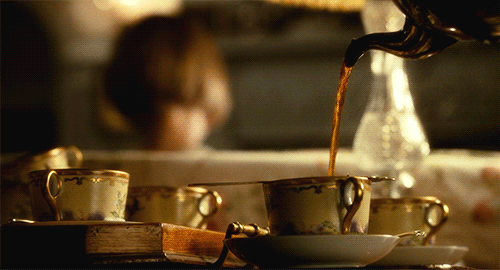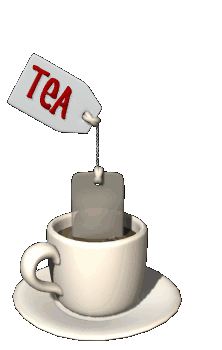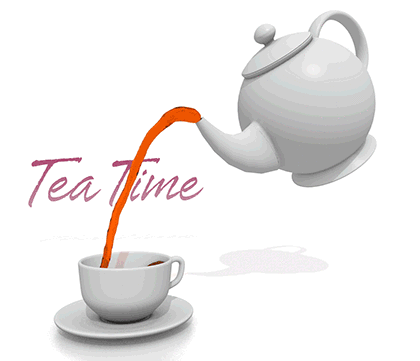

The traditional time for afternoon tea is four o'clock. Today, most hotels and tearooms in North America serve from three to five o'clock.Along with a choice of teas, there are three distinct courses:
1. savones (tiny sandwiches) first,
2. then scones
3. pastries.
Afternoon tea has also been called "low tea" because it was taken at low tables placed beside armchairs. (It's never properly referred to as "high tea")
Invitations may be extended and accepted by telephone, face-to-face, or by mailing them at least a week in advance. Invitations may be informal or engraved, handwritten in calligraphy, or by a calligraphy font.
Invite a close friend or two also as "pourers" and set up a schedule of when each will be "on duty" dispensing tea. No one should pour for more than fifteen or twenty minutes. It is an honor to be asked to pour tea. The pourer is considered the guardian of the teapot, which implies sterling social graces and profound trust.
Let your guests know whom you are honoring. When there is a guest of honor, it is your duty as host to stand with that person near the entrance of the room and introduce each arriving guest to the guest of honor. When the tea is over, guide your guest of honor back to the room entrance to say good-bye to your guests.
The etiquette of the guest of honor departing first, however, is still practiced at diplomatic and official functions. At the White House, the guest of honor departs, then others are free to leave. This etiquette is practiced universally at events where world leaders are in attendance.
SCONES - “SC-ON” OR “S-CONE”?
However one pronounces the word scone, the only thing to remember in terms of correct etiquette is how they should be eaten.
Never cut them directly in half and spread jam and butter on them, the proper way is to place the scone on a plate and tear off bite-sized chunks, then take a knife and apply butter, jam and cream.
DON’T CAUSE A STIR
Under no circumstances must you stir tea in a circular motion! The ‘proper’ way to stir is to place the spoon at a 12 o’clock position in the cup and softly fold the liquid back and forth 2-3 times to the 6 o’clock position, and never ever leave the tea spoon in the cup. When your tea spoon isn’t being used, pop it back on the saucer, to the right of the cup.
The age old question of whether milk should be poured before or after the tea is still hotly debated today. Back in the early days, milk was added to delicate, soft porcelain first in order to prevent the cups from cracking, but once tougher porcelain began being made, it made it unnecessary. So today it’s really down to your own personal preference.
TEACUPS
HOW TO HOLD CUPS AND SAUCERS
Place the saucer holding the cup in the palm of your left hand and move it forward to rest on the four fingers, which are slightly spread apart.
Steady the saucer with your thumb resting on the rim. A left-handed person simply reverses the procedure.
A handled cup is held with the index finger through the handle, the thumb just above it to support the grip, and the second finger below the handle for added security.
The next two fingers naturally follow the curve of the other fingers. It is an affectation to raise the little finger, even slightly.
STIRRING A CUP OF TEA
Stirring a cup of tea is done gently and noiselessly by moving the teaspoon in a small arch back and forth in the center of the cup.
• Do not allow the teaspoon to touch the sides or rim of the cup.
• Remove the spoon and place it on the saucer behind the cup, with the handle of the spoon pointing in the same direction as the handle of the cup.
• Visualize the face of a clock on the saucer and properly place the handle of the cup and the handle of the spoon at four on the clock.
 |  |  |
|---|---|---|
 |  |  |
 |  |  |
 |  |



